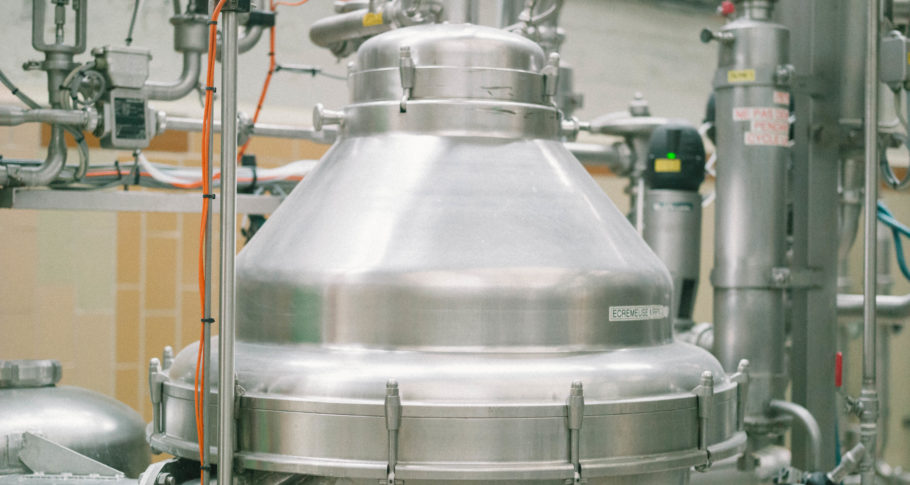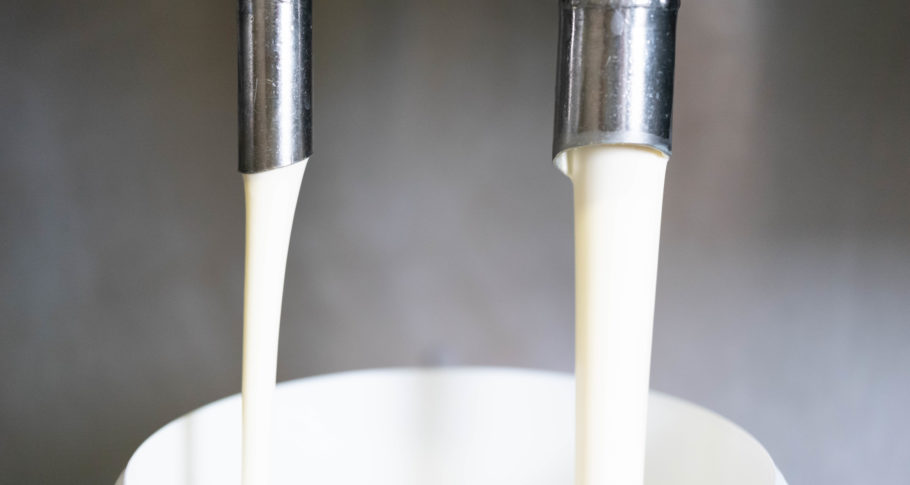7 litres
full cream milk = 1 litre of cream (with 30% fat)
The manufacture of cream
Fat (in cream) is a natural component of milk. On average, a litre of milk contains 38 grams of fat.
In the skimmer, the cream is separated from the milk by centrifuge.
The cream we consume may be more or less high in fat. It is during the skimming stage that low-fat cream (fat content above 12%) and full cream (fat content above 30%) are separated out. The cream is then pasteurised to remove unwanted microorganisms. The result is a fluid cream that can be packaged and stored in bottles in the refrigerated section or undergo UHT treatment before being packaged in cartons and stored at room temperature before opening.
For thick cream, fermentation involves transforming lactose into lactic acid. Carefully selected lactic ferments are added, which will develop and acidify the cream. After maturing in vats for a few hours, the cream will thicken, and will have a characteristic consistency and taste. Nothing else is added to the cream.
French cream: know-how and quality of the terroir
French cream can be recognised in the mouth by its texture and a very distinguished aroma. It is characterised by its roundness, its smoothness and a lively, fresh taste. French cream also meets the creative requirements of chefs in restaurants and pastry shops. The fine taste and remarkable performance it offers for any kitchen preparation or cooking are particularly appreciated: expansion quality, firmness, texture, regularity and stability. Some French creams are inseparable from their terroir. This is the case for Isigny cream and Bresse cream, both of which have a Protected Designation of Origin (PDO).
The creams
- Raw cream
Raw cream is the cream resulting from the separation of milk and cream, directly after skimming and unpasteurised. It is liquid and consists of 30% to 40% fat. - Fluid cream
Neither fermented nor matured, the cream retains its fluid texture. It can be pasteurised or sterilised (UHT cream) low-fat or not. - UHT cream
This cream is heat-treated at 130°-140°C for a few seconds, which destroys all the inherent microorganisms and ensures that the cream can be preserved for several weeks at room temperature while retaining its taste. - Thick fresh cream
Fresh cream is an unsterilised cream matured by fermentation. It’s the fresh cream on our supermarket shelves. It is prepared in a pot. Its fat content is over 30%. - Low-fat cream
To still qualify as cream, low-fat cream must contain at least 12g of fat per 100g. - Whipped cream
Whipped cream is obtained by expansion, which happens when air/neutral gas is absorbed into the cream. This expansion can be achieved in two ways: mechanical whipping or injection of neutral gas under pressure. Whipping or injecting air or neutral gas into the cold cream creates gas bubbles that will form a large but light network. The cream then grows in volume to become whipped cream.

